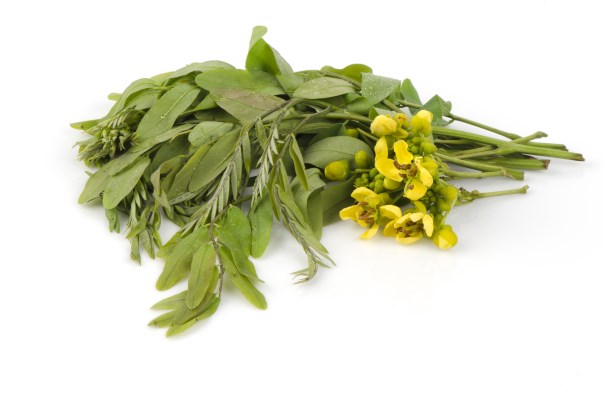Slide 1 of 4: Introduction

Author: Mallory Malkin
Press the Next button to start this activity
Slide 2 of 4: The Placebo Effect and Traditional Healing
This video examines Western and traditional healing practices and how the perceived effects of a healing practice can have just as powerful of an impact as more westernized medicines. Particular attention is paid to the importance of expectancy theory as it relates to healing and engagement in traditional and non-traditional healing practices. The video also emphasizes various healing symbols and the use of such symbols in various healing practices.
- Chapters
- descriptions off, selected
- captions settings, opens captions settings dialog
- captions off, selected
This is a modal window.
Beginning of dialog window. Escape will cancel and close the window.
End of dialog window.
This is a modal window. This modal can be closed by pressing the Escape key or activating the close button.
This is a modal window.
The Placebo Effect and Traditional Healing
NSIKAN AKPAN: Science writer Erik Vance has traveled the globe to learn how healing works, whether it's Western medicine or traditional healing. 6,500 feet up in the mountains of Mexico's Sierra Mazateca, we explored two things that sometimes unite those types of treatment, the theater of medicine and the science of placebos.
ERIC VANCE: My favorite one is I don't know if you've ever like taken a pill and like immediately felt better. Like as soon as you take a pill, your headache just goes away. But the pill actually takes 20 minutes to kick in, so what you're feeling is actually the placebo effect.
NSIKAN AKPAN: Placebos do this by unlocking the body's medicine cabinet, releasing compounds like appetite hormones or pain-relieving opioids. But in his book Suggestible You, Vance explains how a placebo effect can be triggered by more than a sugar pill. Here in Huautla de Jimenez, many experience the placebo effect before they even arrive. Through collective expectations made by the city's reputation. Curanderos, or traditional healers, have existed in this town of 36,000 since before the Spanish arrived. They're best known for introducing the west to psychedelic mushrooms in the 1950s, but they mainly rely on a blend of Christian symbols and indigenous healing practices to treat illnesses.
Parents have passed on these cleansing rituals and cultural garments for centuries.
FABIOLA GARCIA: [SPEAKING FOREIGN LANGUAGE]
INTERPRETER: The most important thing is that the next generation sees exactly which leaves I'm using in massages and drinks. I'm proud I'm teaching my daughter.
NSIKAN AKPAN: Curandero Placido Arturo, who has practiced for 40 years, uses herbs and spiritual blessings to treat everything from toothaches to infertility. These settings form a theater of medicine.
ERIC VANCE: A lot of placebo involves storytelling to pull someone out of their everyday, shock them a little bit, and try to create a story that forces your brain to start treating itself.
NARRATOR: The shock from these fire ants relieved Erik's forearm tendinitis. The ant bites are an active placebo, a sensation that convinces the body to open up its medicine cabinet.
The next day we visit curandero Elodia Pineda Garcia to see if this theater can treat my lower back pain. She blesses me, rubs my lower back, and at the end of the ceremony she spits water in my face to cleanse my spirit. OK. At this point I was skeptical. But I walked away feeling a surprising amount of relief, relief that lasted for months. To learn why, let's leave Huautla for a moment and visit the University of Maryland Baltimore.
LUANA COLLOCA: We call this social a learning in placebo effects. So for example, if a patient observes another patient getting a benefit from a therapeutic treatment, this can create strong expectations.
NSIKAN AKPAN: Neuroscientist Luana Colloca, whose lab is funded by the National Institutes of Health and others, studies how placebo effects can influence pain disorders. While physical injury causes pain, the brain can amplify or even create these pain signals merely through the expectations of feeling bad or through stress. Her lab uses fake ointments, hot heating pads, and functional magnetic resonance imaging, or FMRI, to spot brain areas responsible for pain-fighting placebo responses.
In a simplified version, we test my susceptibility to placebos. When the pad becomes painful, I click a mouse and the heat subsides. After gauging my pain tolerance, I rank how much pain I'm feeling from zero to 100. But then the screen turns different colors.
LUANA COLLOCA: Any time the light is red, you will receive a high level of pain.
NSIKAN AKPAN: When it's green, she says, the same pain gets delivered, but an electroshock probe inside this wristband attached just below the heating pad will soothe my pain nerves.
LUANA COLLOCA: How much do you expect that this procedure is going to reduce your level of pain.
NSIKAN AKPAN: Maybe by half.
LUANA COLLOCA: By half. OK.
NSIKAN AKPAN: Yeah, it won't stop that at all. Of course, the probe is a prop. I receive the same hurtful heat every time. If the pad felt cool when the light was green, weirdly my pain perception dropped by exactly 50%, suggesting an expectation for healing can be controlled.
ERIK VANCE: The doctor can also create a placebo effect and add that placebo effect to the power of the medicine. So it's in the way that they talk to you, it's in the clothing that they wear, it's in the environment that they choose to be in.
NSIKAN AKPAN: So whether you're with a doctor in Baltimore or a curandero in the Mexican mountains, these healing placebos are never too far away.
Slide 3 of 4: Check Your Understanding
Instructions:
Answer the questions based on the video and your reading of the chapter.
Slide 4 of 4: 1.1 Activity Completed!
Congratulations! You have completed this activity.